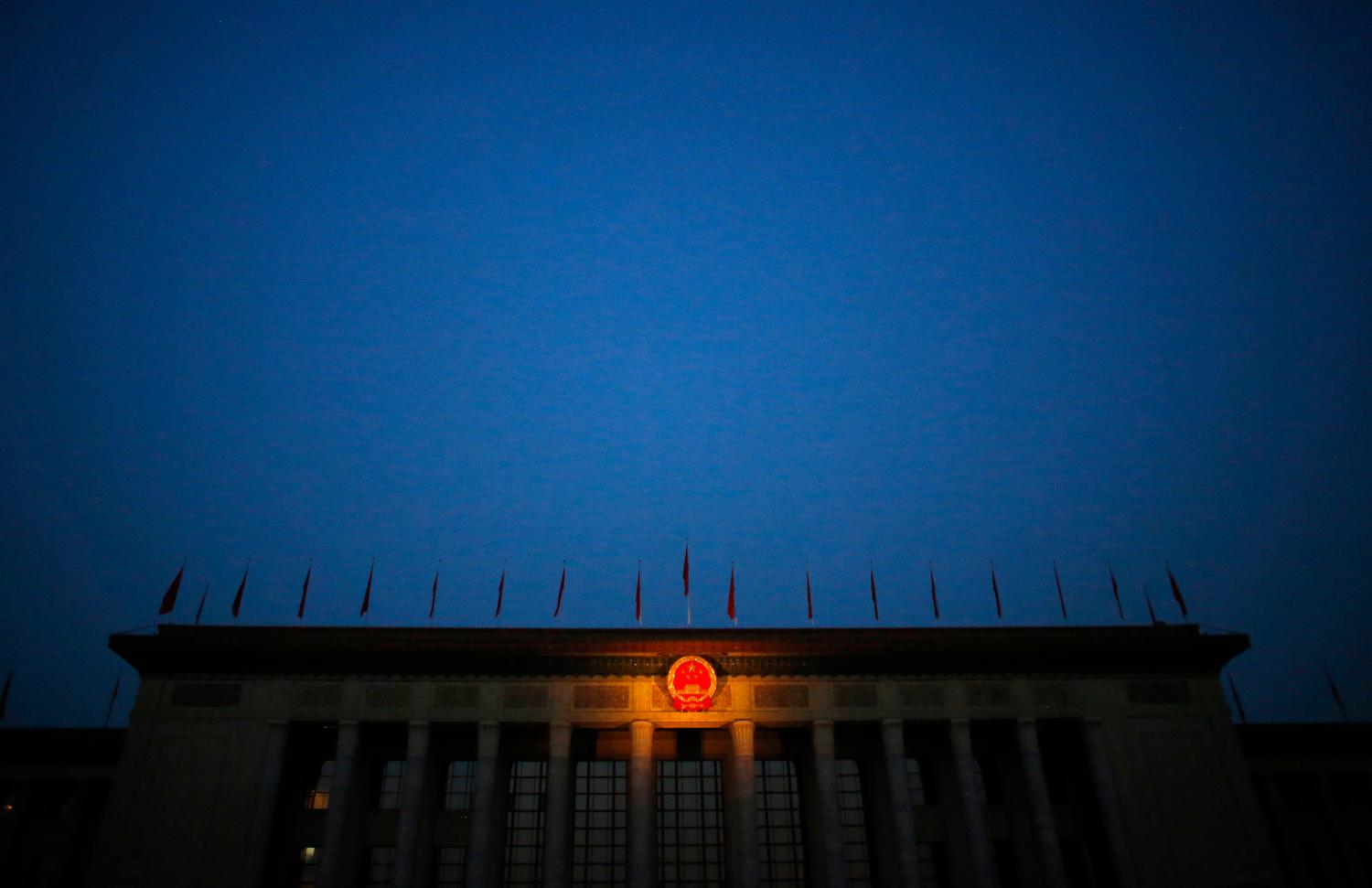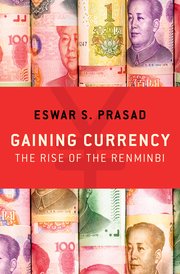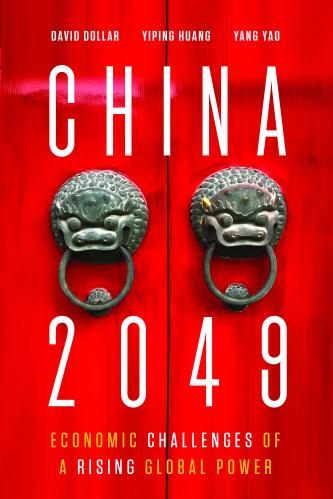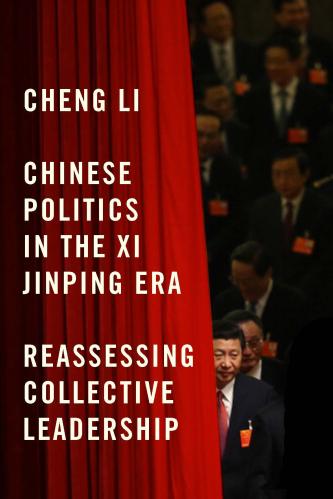 China’s economy is now the second largest in the world and a key driver of global growth. But the prominence of its currency, the renminbi, is not commensurate with its weight in the world economy. As a result of measures taken by the Chinese government, the renminbi has certainly made some progress as an international currency over the last decade although this progress has leveled off in the latter half of the decade. It is likely that the renminbi will gradually become a more significant player in international financial markets, yet its full potential will remain unrealized unless the Chinese government undertakes a broad range of economic and financial system reforms. In the long run, what the renminbi’s ascendance means for the global financial system depends, to a large extent, on how China’s economy itself changes in the process of elevating its currency.
China’s economy is now the second largest in the world and a key driver of global growth. But the prominence of its currency, the renminbi, is not commensurate with its weight in the world economy. As a result of measures taken by the Chinese government, the renminbi has certainly made some progress as an international currency over the last decade although this progress has leveled off in the latter half of the decade. It is likely that the renminbi will gradually become a more significant player in international financial markets, yet its full potential will remain unrealized unless the Chinese government undertakes a broad range of economic and financial system reforms. In the long run, what the renminbi’s ascendance means for the global financial system depends, to a large extent, on how China’s economy itself changes in the process of elevating its currency.
Around the year 2010, the Chinese government began to promote the international use of the renminbi. This put the currency on a path to what seemed to be an inexorable rise to global dominance. The renminbi quickly became the fifth most important currency in international payments (behind the U.S. dollar, the euro, the Japanese yen, and the British pound sterling).1 In 2016, the International Monetary Fund (IMF) included the renminbi in an elite basket of currencies that comprise the institution’s Special Drawing Rights (SDR), making it an official reserve currency.2 Since then, however, the renminbi’s progress has stalled. The renminbi’s share of international payments has fallen below 2%3 and the share of global foreign exchange reserves held in renminbi-denominated assets has plateaued at about 2%.4 Other quantitative indicators of the currency’s use in international finance, including trade settlement in the currency and issuance of renminbi-denominated bonds offshore, all point to signs of a stalling of the currency’s advance as an international currency.
After a hiatus during the mid-2010s, when a surge of capital outflows put the renminbi under severe depreciation pressures, the government has recently resumed progress on policies to promote the currency’s international use. It has resumed removing restrictions on capital inflows and outflows in a controlled and gradual manner. Chinese stock and bond markets are now largely open to foreign investors. At the same time, there are now many channels available for Chinese households, corporations, and institutional investors that wish to invest some portion of their investments in foreign markets. China has promoted the availability of renminbi outside its borders, including approving more than 15 offshore trading centers where transactions between renminbi and other currencies can be conducted. The government has also set up a payment system to facilitate commercial transactions between domestic and foreign companies using renminbi rather than more widely-used currencies such as the dollar and the euro. These measures have helped the internationalization of the currency. This term signifies its greater use in denominating and settling cross-border trade and financial transactions — that is, its use as an international medium of exchange.
A different aspect of a currency’s role in international finance is its status as a reserve currency, one that is held by foreign central banks as protection against balance of payments crises. Even though the IMF has officially anointed the renminbi as a reserve currency, financial market participants’ views are more important in determining a currency’s status. The renminbi’s status as a reserve currency has been impeded by the Chinese government’s unwillingness to free up its exchange rate, allowing the currency’s external value to be determined by market forces, and to fully open the capital account. Moreover, China’s financial markets remain limited and underdeveloped, with a number of constraints such as a rigid interest rate structure.
China is now in the process of rolling out its central bank digital currency — the Digital Currency/Electronic Payment (DCEP).5 The DCEP by itself will not be a game changer for the renminbi’s role in global finance. For all the hype about DCEP, China’s Cross-border Interbank Payments System is a more important innovation that makes it easier to use the currency for international transactions. This payments system also has the ability to bypass the Western-dominated SWIFT messaging system for international payments. As the renminbi becomes more widely used, other smaller and developing countries that have strong trade and financial links with China might start to invoice and settle their trade transactions directly in that currency. The DCEP could eventually be linked up to the cross-border payments system, further digitizing international payments.
However, the DCEP by itself will make little difference to whether foreign investors see the renminbi as a reserve currency. That will require significant reforms on a variety of fronts, including financial market development and openness. The required reforms are very much in China’s own interests as it tries to create a foundation for sustained and balanced growth. For instance, China’s government and corporate debt securities markets are quite large but still seen as having limited trading volume and weak regulatory frameworks. Strengthening its financial markets is important both for China’s own economic development and for promoting the international role of its currency. A more comprehensive and robust regulatory framework would also help build confidence in China’s financial markets.
Finally, there is the question about whether the renminbi can realistically aspire to the status of a “safe haven” currency. Such a currency is one that investors turn to for safety during times of global turmoil, rather than for diversifying their stores of assets denominated in foreign currencies or seeking higher yields on their investments. History suggests that a country seeking this status for its currency must have a sound institutional framework — including an independent judiciary, an open and transparent government with institutionalized checks and balances, and robust public institutions (especially a credible central bank). These elements have traditionally been seen as vital for earning the trust of foreign investors, both private as well as official, including central banks and sovereign wealth funds.
While the Chinese leadership is pursuing financial liberalization and limited market-oriented economic reforms, it appears to have repudiated political, legal, and institutional reforms. In short, while the renminbi has the potential to become a significant reserve currency, it is unlikely to attain safe haven status in the absence of far-reaching reforms to China’s institutional and political structures. Under the present regime, the prospects of such changes are dim.
While the renminbi has the potential to become a significant reserve currency, it is unlikely to attain safe haven status in the absence of far-reaching reforms to China’s institutional and political structures.
What implications does the renminbi’s rise have for the configuration of the international monetary system, especially the dollar’s dominance? Any gains the renminbi has made in recent years, both as a payment currency and as a reserve currency, have mostly come at the expense of currencies such as the euro and the British pound sterling. Even when the IMF inducted the renminbi into the SDR basket of currencies, its weight of 10.9% came largely at the expense of the other currencies in the basket — the euro, the pound sterling, and the Japanese yen — rather than the dollar. There seems little prospect of the renminbi’s growing prominence having a significant impact on the dollar’s status as the dominant payment and reserve currency.
To sum up, the renminbi is on its way to eventually becoming a more widely used currency in international trade and finance. So long as China continues to make progress on financial sector and other market-oriented reforms, it is likely that the renminbi will become a more important reserve currency within the next decade. For the renminbi to become a safe haven currency, however, would require not just economic and financial reforms but also significant institutional reforms.
-
Footnotes
- “RMB Tracker: Monthly reporting and statistics on renminbi (RMB) progress towards becoming an international currency,” SWIFT, August 2020, https://www.swift.com/sites/default/files/files/SWIFT_RMB_Tracker_August_2020_Slides.pdf.
- “IMF Launches New SDR Basket Including Chinese Renminbi, Determines New Currency Amounts,” International Monetary Fund, September 30, 2016, https://www.imf.org/en/News/Articles/2016/09/30/AM16-PR16440-IMF-Launches-New-SDR-Basket-Including-Chinese-Renminbi.
- “RMB Tracker: Monthly reporting and statistics on renminbi (RMB) progress towards becoming an international currency,” SWIFT.
- “Currency Composition of Official Foreign Exchange Reserves (COFER),” International Monetary Fund, https://data.imf.org/?sk=E6A5F467-C14B-4AA8-9F6D-5A09EC4E62A4.
- Eswar Prasad, “China’s Digital Currency Will Rise but Not Rule,” Project Syndicate, August 25, 2020, https://www.project-syndicate.org/commentary/china-digital-currency-will-not-threaten-dollar-by-eswar-prasad-2020-08.
The Brookings Institution is committed to quality, independence, and impact.
We are supported by a diverse array of funders. In line with our values and policies, each Brookings publication represents the sole views of its author(s).








Commentary
The renminbi rises but will not rival the dollar
October 2020